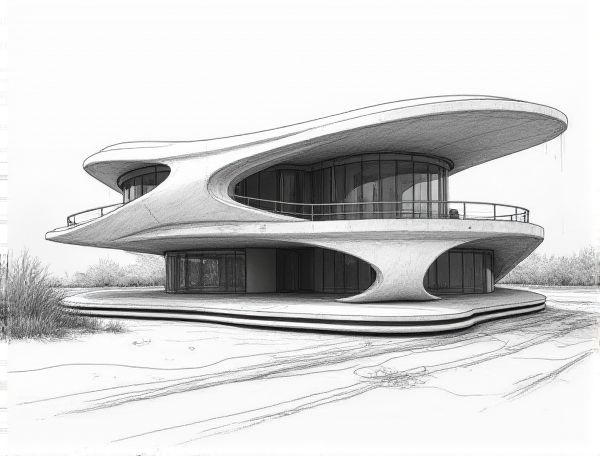
Photo illustration: Neo-futuristic home design with kinetic façades
Neo-futuristic home design incorporates kinetic facades that adapt dynamically to environmental conditions, enhancing energy efficiency and aesthetic appeal. Explore how these innovative features transform your living space by reading more in the article.
Introduction to Neo-Futuristic Home Design
Neo-futuristic home design emphasizes innovative architecture that combines cutting-edge technology with sustainable materials to create sleek, dynamic living spaces. This style prioritizes fluid forms, energy efficiency, and smart home integration, reflecting a forward-thinking approach to residential environments.
The Evolution of Kinetic Façades in Architecture
Kinetic facades have transformed architectural design by integrating dynamic elements that respond to environmental conditions, enhancing energy efficiency and aesthetic appeal. Advances in materials science and smart technology enable these facades to adapt in real-time, optimizing natural light and ventilation while reducing energy consumption. Notable projects, such as the Al Bahr Towers in Abu Dhabi, exemplify cutting-edge implementation of kinetic systems that blend functionality with innovative design.
Key Characteristics of Neo-Futuristic Residential Aesthetics
Neo-futuristic residential aesthetics emphasize sleek, dynamic forms with innovative materials such as glass, steel, and carbon fiber to create fluid, organic structures. Integration of smart technology and sustainable design principles further enhances energy efficiency and adaptive living environments in these cutting-edge homes.
Benefits of Integrating Kinetic Façades in Homes
Integrating kinetic facades in homes enhances energy efficiency by dynamically adapting to sunlight and temperature changes, reducing heating and cooling costs. These innovative systems improve indoor comfort and natural lighting, contributing to healthier living environments. Your home can achieve sustainable design goals while showcasing modern architectural aesthetics through the use of kinetic facades.
Sustainable Solutions Through Dynamic Building Envelopes
Dynamic building envelopes enhance energy efficiency by adapting to environmental conditions, reducing heating and cooling demands while maximizing natural light. These sustainable solutions incorporate smart materials and responsive technologies to improve insulation, ventilation, and moisture control, resulting in a healthier indoor environment. Your home benefits from lower energy costs and a smaller carbon footprint, promoting long-term environmental stewardship.
Innovative Materials and Technologies Driving Kinetic Façades
Innovative materials such as shape-memory alloys and electrochromic glass enable kinetic facades to dynamically adapt to environmental conditions, enhancing energy efficiency and aesthetic appeal. Your home design benefits from advanced technologies like smart sensors and automated control systems that optimize these responsive facades for maximum performance and comfort.
Smart Home Integration with Responsive Architectural Elements
Smart home integration enhances residential design by embedding responsive architectural elements such as automated lighting, climate control, and adaptive shading systems that adjust based on occupancy and environmental conditions. These technologies improve energy efficiency, comfort, and security while seamlessly blending with the home's aesthetic and structural features.
Case Studies: Outstanding Neo-Futuristic Homes Worldwide
Neo-futuristic homes worldwide showcase groundbreaking designs characterized by fluid shapes, sustainable materials, and cutting-edge technology integration. Case studies such as the Morpheus Hotel in Macau and the Eden Project Living Bridge in the UK highlight innovative structural engineering and ecological harmony. These exemplary projects set new standards in home design, blending aesthetics with functionality and environmental consciousness.
Challenges and Considerations in Kinetic Façade Implementation
Implementing kinetic facades presents challenges such as high installation and maintenance costs along with complex mechanical systems that require specialized expertise. Your design must consider factors like local climate, building orientation, and energy efficiency goals to ensure optimal performance and longevity.
The Future of Residential Living: Toward Adaptive and Intelligent Homes
Smart home technologies are revolutionizing residential living by integrating AI-driven systems that learn your habits to optimize energy efficiency, security, and comfort. Adaptive homes equipped with responsive environments and IoT devices offer personalized experiences, transforming the way you interact with your living space.
 homedesy.com
homedesy.com